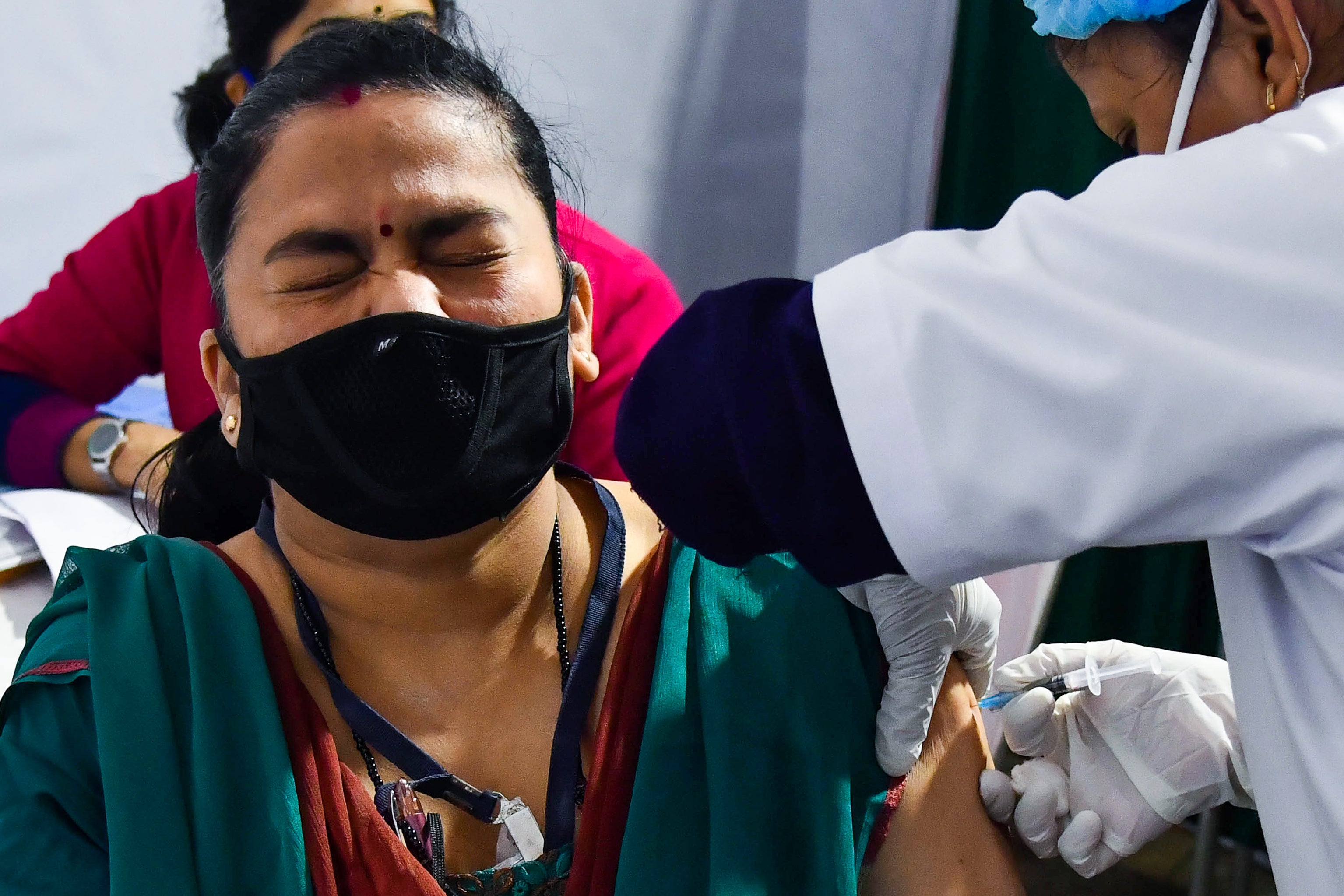World’s largest Covid-19 inoculation drive falters in India
As of 8 June, less than four per cent of India’s adult population has recieved two Covid-19 vaccines

Your support helps us to tell the story
From reproductive rights to climate change to Big Tech, The Independent is on the ground when the story is developing. Whether it's investigating the financials of Elon Musk's pro-Trump PAC or producing our latest documentary, 'The A Word', which shines a light on the American women fighting for reproductive rights, we know how important it is to parse out the facts from the messaging.
At such a critical moment in US history, we need reporters on the ground. Your donation allows us to keep sending journalists to speak to both sides of the story.
The Independent is trusted by Americans across the entire political spectrum. And unlike many other quality news outlets, we choose not to lock Americans out of our reporting and analysis with paywalls. We believe quality journalism should be available to everyone, paid for by those who can afford it.
Your support makes all the difference.India began an inoculation drive for its 1.38 billion people in earnest in mid-January.
Healthcare, frontline workers and the elderly were the first eligible, followed by people aged over 45 in April and then adults aged 18-45 in May.
That last extension, covering around 43 per cent of the population, proved to be a crunch point.
Following a surge in Covid-19 infections across the country in April, Prime Minister Narendra Modi accelerated plans to broaden the programme and opened up vaccinations from 1 May for people aged between 18 and 45 years.
The decision led to a rush by people in that age group, who account for 600 million of the population, to sign up to the government’s CoWIN vaccination website. Critically, there was no corresponding increase in vaccine supplies.
By 4 June, India had provided at least one dose to roughly 50 million people aged between 18 and 44, representing just 8 per cent of that population group.
Adding to the difficulties, a privilege gap emerged in the vaccination rollout, with hospitals charging different prices for the same vaccine. Some hospitals in affluent areas have sold the Covishield shot, manufactured in India, for 1,800 rupees (£17) a dose, almost double the 950 rupees (£9) charged elsewhere.
Also, urban Indians have received shots faster than those living in the countryside. That means vaccines remain unavailable to a large part of the population that cannot afford it or has little or no access to private hospitals.
India - the world’s biggest producer of vaccines for polio, diphtheria and other diseases - sold or donated more than 66 million Covid-19 vaccine shots to 95 countries until the middle of April.
But as infections started rising from around mid-March in India, the clamour for vaccines at home also increased. India has now started importing vaccines and also expecting donations from the United States.
The government expects vaccine supplies to improve substantially from June. It is expecting to produce enough shots by December to inoculate all of its estimated 950 million adults, though those between 18 and 45 years will be the last on the priority list.
Several states in India have begun to gradually lift restrictions on travel and businesses, after a fall in cases in recent weeks. However, health experts have warned that cases could surge again once most states re-open, and have called for vaccinations to be sped up.
As of 8 June, less than four per cent of India’s adult population had been given the required two vaccine doses. Nearly 14 per cent received at least one dose and, of that group, less than one-tenth of 18-45 year olds have been inoculated.
Reuters
Join our commenting forum
Join thought-provoking conversations, follow other Independent readers and see their replies
Comments